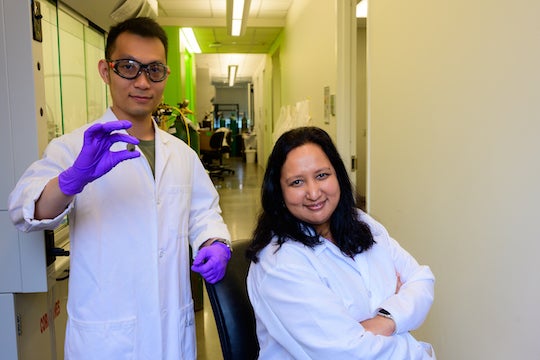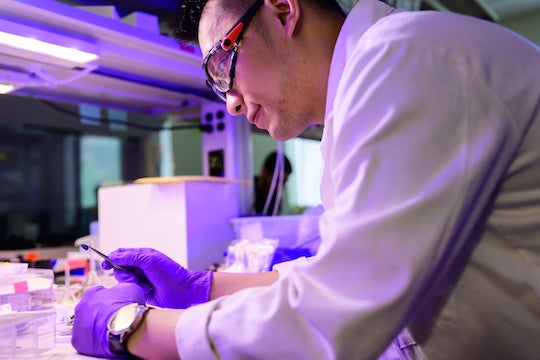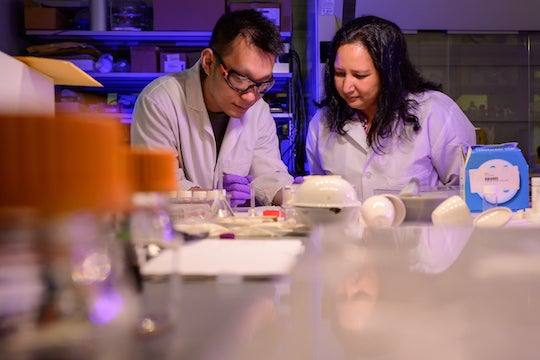Rice U. engineers improve prelithiation, uncover lithium-trapping mechanism

New Priming Method Improves Battery Life Efficiency: Silicon anode batteries have the potential to revolutionize energy storage capabilities, which is key to meeting climate goals and unlocking the full potential of electric vehicles.
However, the irreversible depletion of lithium ions in silicon anodes puts a major constraint on the development of next-generation lithium-ion batteries.
Scientists at Rice University’s George R. Brown School of Engineering have developed a readily scalable method to optimize prelithiation, a process that helps mitigate lithium loss and improves battery life cycles by coating silicon anodes with stabilized lithium metal particles (SLMPs).
The Rice lab of chemical and biomolecular engineer Sibani Lisa Biswal found that spray-coating the anodes with a mixture of the particles and a surfactant improves battery life by 22% to 44%. Battery cells with a greater amount of the coating initially achieved a higher stability and cycle life. However, there was a drawback: When cycled at full capacity, a larger amount of the particle coating led to more lithium trapping, causing the battery to fade more rapidly in subsequent cycles.
The study is published in ACS Applied Energy Materials.
Replacing graphite with silicon in lithium-ion batteries would significantly improve their energy density ⎯ the amount of energy stored relative to weight and size ⎯ because graphite , which is

made of carbon, can pack fewer lithium ions than silicon. It takes six carbon atoms for every single lithium ion, while just one silicon atom can bond with as many as four lithium ions.
New Priming Method Improves Battery Life Efficiency: “Silicon is one of those materials that has the capability to really improve the energy density for the anode side of lithium-ion batteries,” Biswal said. “That’s why there’s currently this push in battery science to replace graphite anodes with silicon ones.”
However, silicon has other properties that present challenges.
“One of the major problems with silicon is that it continually forms what we call a solid-electrolyte interphase or SEI layer that actually consumes lithium,” Biswal said.
The layer is formed when the electrolyte in a battery cell reacts with electrons and lithium ions, resulting in a nanometer-scale layer of salts deposited on the anode. Once formed, the layer insulates the electrolyte from the anode, preventing the reaction from continuing. However, the SEI can break throughout the subsequent charge and discharge cycles, and, as it reforms, it irreversibly depletes the battery’s lithium reserve even further.
“The volume of a silicon anode will vary as the battery is being cycled, which can break the SEI or otherwise make it unstable,” said Quan Nguyen, a chemical and biomolecular engineering doctoral alum and lead author on the study. “We want this layer to remain stable throughout the battery’s later charge and discharge cycles.”
The prelithiation method developed by Biswal and her team improves SEI layer stability, which means fewer lithium ions are depleted when it is formed.

New Priming Method Improves Battery Life Efficiency: “Prelithiation is a strategy designed to compensate for the lithium loss that typically occurs with silicon,” Biswal said. “You can think of it in terms of priming a surface, like when you’re painting a wall and you need to first apply an undercoat to make sure your paint sticks. Prelithiation allows us to ‘prime’ the anodes so batteries can have a much more stable, longer cycle life.”
While these particles and prelithiation are not new, the Biswal lab was able to improve the process in a way that is readily incorporated into existing battery manufacturing processes.
“One aspect of the process that is definitely new and that Quan developed was the use of a surfactant to help disperse the particles,” Biswal said. “This has not been reported before, and it’s what allows you to have an even dispersion. So instead of them clumping up or building up into different pockets within the battery, they can be uniformly distributed.”
Nguyen explained that mixing the particles with a solvent without the surfactant will not result in a uniform coating. Moreover, spray-coating proved better at achieving an even distribution than other methods of application onto anodes.
“The spray-coating method is compatible with large-scale manufacturing,” Nguyen said.
Controlling the cycling capacity of the cell is crucial to the process.

New Priming Method Improves Battery Life Efficiency: “If you do not control the capacity at which you cycle the cell, a higher amount of particles will trigger this lithium-trapping mechanism we discovered and described in the paper,” Nguyen said. “But if you cycle the cell with an even distribution of the coating, then lithium trapping won’t happen.
“If we find ways to avoid lithium trapping by optimizing cycling strategies and the SLMP amount, that would allow us to better exploit the higher energy density of silicon-based anodes.”
Biswal is Rice’s William M. McCardell Professor in Chemical Engineering, a professor of materials science and nanoengineering, and associate dean for faculty development.
The research was supported by Ford Motor Co.’s University Research Program, the National Science Foundation (1842494, CBET-1626418) and the Shared Equipment Authority at Rice.
New Priming Method Improves Battery Life Efficiency: Original Article
Watching Lithium Improves Performance of EV Battery Materials
Here’s why we care about attempts to prove the Riemann hypothesis
Why prime numbers still fascinate mathematicians, 2,300 years later















